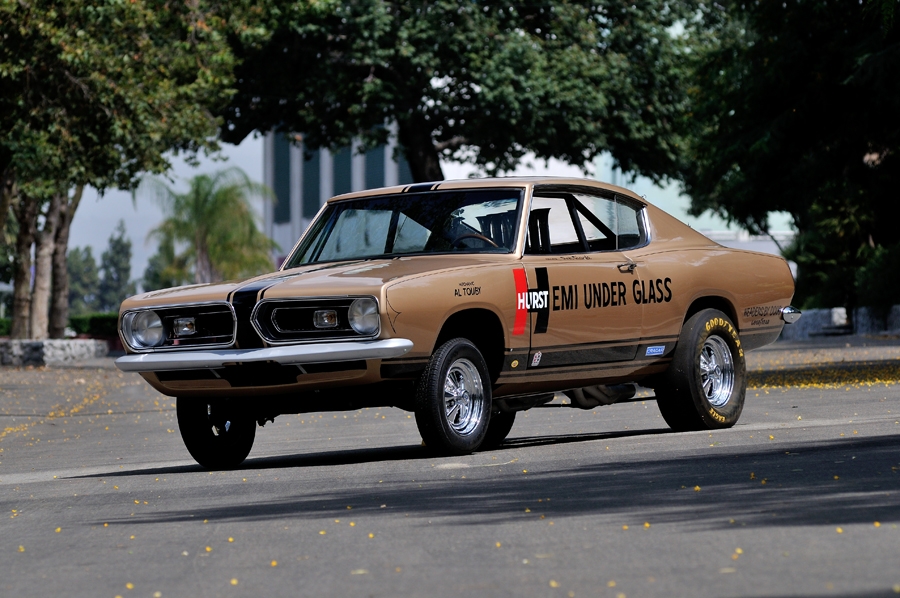No chassis number available
• The original 1967 Hurst Hemi Under Glass exhibition wheelstander piloted by Bob Riggle
• Riggle restored the car for collector Bill Sefton, and they campaigned it at exhibitions with Riggle at the wheel
• Regularly on public display at the NHRA Motorsports Museum in Pomona, CA
• Rear-mounted 426 Hemi engine
• Cragar wheels and Goodyear slicks

